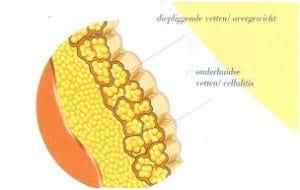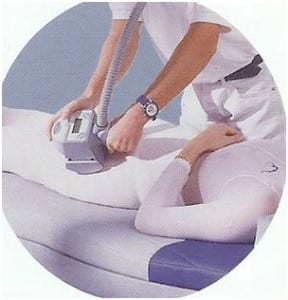Background Information on liposuction
Liposculpture (also called lipoplasty, liposculpture or lipectomy)is a very common, popular procedure.
It is designed for the permanent removal of fat tissue. Liposuction is particularly well-suited for women and men who are of relatively normal weight but have isolated pockets of fat that cause certain areas of their body to appear disproportionate.
These localized fat deposits may sometimes be an inherited trait and typically do not respond to dieting or exercise. These areas include the hips, thighs, abdomen, knees, ankles, face and neck. Liposuction is often the only way to eliminate them. Liposuction is most successful in people with good skin tone who have fat deposits.
It is not a treatment for obesity. If weight gain occurs following liposuction, the fat will be deposited in areas that have not been treated. The procedure can be repeated, if necessary.
To maintain the safety of the procedure, there is a limit on how much can be done at one time. Dr Giorgio Fisher, an Italian Gynaecologist, first used liposuction as a technique for removal of fat in 1974. It was then widely used in Europe by Dr. Illouz, a French Plastic Surgeon and eventually it reached the United States in the early 1980s. However, some bad publicity caused by the need for blood transfusions in some patients, and several deaths in others after liposuction, meant that this type of fat removal did not become popular until a new technique was developed. Dr Jeffrey Klein, a Californian dermatologist (skin specialist), devised this new treatment, called tumescent anaesthesia, in 1985. It proved to be much safer than the older treatment.
Over the last decade or so there have been many improvements in the procedure making it much safer and easier to perform in trained hands. The result is that liposuction is now the most popular surgical cosmetic treatment performed in the U.S. with over 403,000 procedures in 2006, according to statistics from the American Society for Aesthetic Plastic Surgery. Similar data is not yet available for the United Kingdom, but liposuction becomes increasingly popular year after year.
If you are considering liposuction for the removal of areas of stubborn fat, the following information will give you a basic understanding of the procedure. It can’t answer all your questions, since a lot depends on the individual patient and the surgeon. Please ask a surgeon about anything you don’t understand.
Operation in Belgium
Fat is removed by first inserting a small, hollow tube, called a cannula, through one or more tiny incisions near the area to be suctioned.
Incisions are usually less than one-quarter inch in length and are placed as inconspicuously as possible, often within skin folds or contour lines. The incisions typically heal with very little scars.The cannula is connected by tubing to a vacuum pressure unit. Guided by the surgeon, the suction device literally vacuums away the unwanted fat. Before any fat is removed during a liposuction, a wetting solution (tumescent) is placed into the fatty areas to be recontoured. This fluid helps provide additional anesthesia and minimizes bleeding.
The amount of wetting solution placed into the areas to be recountoured depends on the surgeon’s techniques and amount of fat to be removed in any given area. The fat is removed during the liposuction procedure using hollow tubes. These tubes are commonly refered to as canulas. The liposuction canulas may be of various diameters and are hooked up to suction units which provide a negative pressure that causes the fat to be aspirated out of the body. The amount of aspirate that can be removed, depends on how much fat a person has in a given area and their desired result. The aspirate is composed of the fat and the wetting solution that was placed into the body to assist in the fat removal. Aspirate volumes have been an area of discussion in the press and plastic surgery community.
It is typically recommended to not remove more than 5 liters of aspirate an operation. This is just a recommended guideline that is followed by most plastic surgeons. In some states, restrictions are made on the amount of volumes that can be removed at one time in an outpatient setting. After the appropriate amount of fat has been removed and the area correctly recontoured, the small access wounds are then closed.
These patients must wear a compressive support garment on any area that was treated. It usually will be required for 7 days to 3 weeks. Exercise may be resumed within approximately 14 days, depending on the number of areas that were suctioned and how much tissue was removed. You may be able to return to work in just a few days. In many instances, you can resume most of your normal activities within one or two weeks and begin some form of exercise soon after. The timing of your recovery depends largely on the extent of your surgery.
Complication
Risks
Fortunately, significant complications from liposuction are infrequent. Every year, many thousands of people have undergone liposuction, experience no major problems and are pleased with the results. Anyone considering surgery, however, should be aware of both the benefits and risks.
Rarely there may be some unevenness, persistent swelling, or lumpiness at the places where the liposuction took place, and a little skin discolouration, or scarring at the incision points.
If you have liposuction which involves ultrasound, there may also be a risk of burns to the skin and to the deeper tissues under the skin.
Conclusion
Who is the best candidate for this procedure? The best candidates for this procedure include:
In generally good psychological and physical health
Not a heavy alcohol consumer
At least 18 years of age
If you are prone to keloid (red, angry, raised) scars, or have a history of problems with wound healing your surgeon may not recommend this procedure or may caution you that scars could be raised and very visible.

